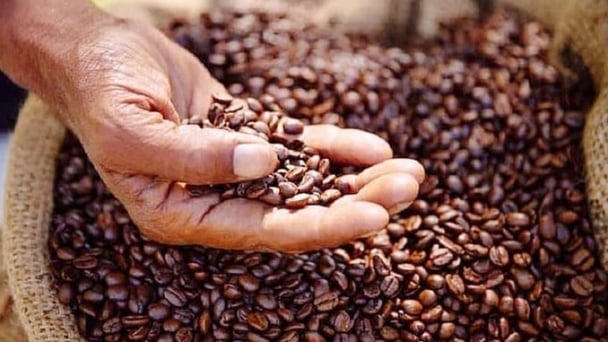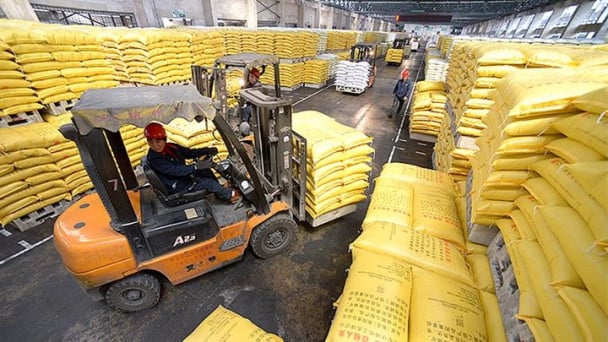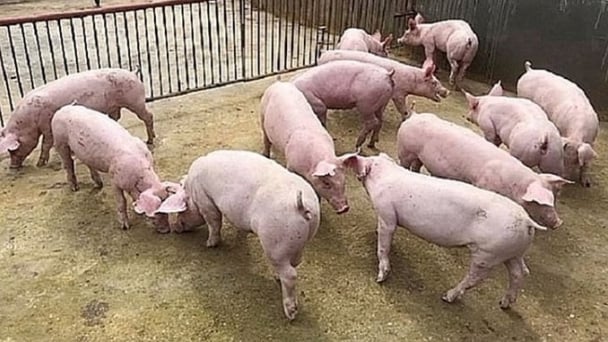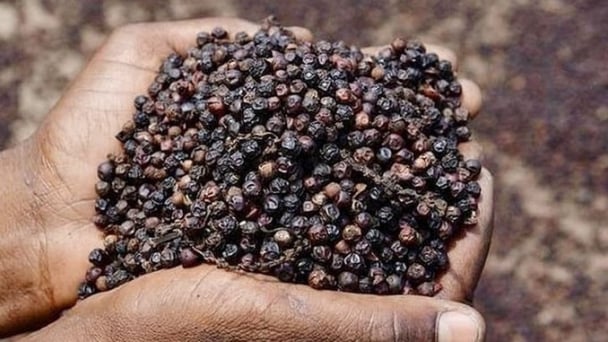May 21, 2025 | 21:43 GMT +7
May 21, 2025 | 21:43 GMT +7
Hotline: 0913.378.918
May 21, 2025 | 21:43 GMT +7
Hotline: 0913.378.918
According to the MXV, the global commodity market showed mixed movements at the close of the trading session on July 9. A strong rise in the prices of industrial raw materials led to the overall market trend, with the MXV Index recovering by 0.67% to 2,269 points.
At the close of the trading session on July 9, prices for both types of coffee continued to rise sharply. Specifically, Arabica coffee prices increased by 6.63% to $ 5,510.45/ton, reaching a two-year high. Robusta coffee prices surged by 6.58% to $ 4,634/ton, marking the fourth consecutive session of gains and surpassing the historical peak set in April.
The weakened USD/BRL exchange rate, combined with the continued decrease in certified coffee stocks on the ICE exchange for the second session, helped Arabica coffee prices maintain their upward momentum.
The Brazilian Real strengthened, causing the USD/BRL exchange rate to drop sharply by nearly 1% in the previous session. The narrowing exchange rate differential limited the demand for Brazilian farmers to sell coffee aggressively, contributing to the dominance of buying power in the market.
Additionally, at the close of July 8, certified Arabica stocks on ICE-US lost another 2,710 bags of 60 kg, reducing the total certified coffee stock to 808,649 bags.
For Robusta coffee, concerns about supply shortages in Vietnam continued to drive the market.
In line with these price movements, cocoa prices surged by 5.78% due to the currently tight supply in the market. From the start of the 2023-2024 season to July 7, the amount of cocoa transported to the ports of Ivory Coast was only 1.61 million tons, a significant decrease of 29% compared to the same period of the previous season.
The consultancy firm Trader Ecom Agroindustrial has lowered its 2023-2024 cocoa production forecast for the country to the lowest level in eight years, at 1.75 million tons, down 21.5% from the same period last season.
At the close of yesterday's session, global oil prices weakened for the third consecutive session due to reduced supply risks from the U.S. By the end of the day, WTI oil prices dropped by 1.12% to $ 81.41/barrel, and Brent oil prices fell by 1.27% to $ 84.66/barrel.
Traders noted that supply disruptions caused by Hurricane Beryl were limited.
Although some offshore production sites in the U.S. were evacuated, ports were closed, and refinery operations slowed down, major refineries along the U.S. Gulf Coast appeared not to be significantly impacted after Hurricane Beryl weakened into a tropical depression.
Major oil ports in Texas were set to reopen on Tuesday after being forced to close earlier.
Some operators, such as Marathon Petroleum, stated they were also preparing to restart their refineries.
Additionally, investors had mixed reactions to comments from Federal Reserve Chairman Jerome Powell after his congressional testimony on Tuesday.
Powell remarked that the economy is no longer overheating and the job market is cooling down. Despite suggesting the possibility of an upcoming interest rate cut, oil prices fell further after his comments because a weakening economy could hinder crude oil demand.
Similarly, in the July Short-Term Energy Outlook report, the U.S. Energy Information Administration (EIA) also lowered its forecast for U.S. GDP growth this year to 2.4%, down by 0.1 percentage points from the previous estimate.
However, the market's decline narrowed at the end of the trading session as, despite lowering the U.S. growth forecast, the EIA indicated that the market would remain significantly undersupplied in 2024, with an average annual deficit of 500,000 barrels/day, 100,000 barrels/day. This is higher than the previous estimate.
Specifically, the EIA revised the global oil production forecast for 2024 down to 102.4 million barrels per day from 102.6 million barrels per day, while keeping supply growth unchanged at 1.1 million barrels per day.
Moreover, early this morning, the American Petroleum Institute (API) reported that U.S. commercial crude oil inventories decreased by nearly 2 million barrels for the week ending July 5, compared to the market's forecast of a 0.7 million barrel decrease. The pressure on inventories thereby pulled oil prices back up.
Translated by Hoang Duy

(VAN) Coffee prices on May 21, 2025, dropped sharply by VND 1,000, trading at VND 125,000 – 125,700/kg. Global coffee prices also reversed and declined.

(VAN) Coffee prices on May 20, 2025, surged by VND 2,200, climbing to VND 126,000 – 126,700/kg. Meanwhile, global coffee prices also recorded a sharp increase.

(VAN) Pepper prices on May 20, 2025, dropped by VND 1,000 only in Gia Lai, trading at VND 150,000 – 153,000/kg. Global pepper prices remained unchanged.

(VAN) Analysts are watching moves out of Asia, particularly with fertilizer.

(VAN) Rubber prices on May 20, 2025, show mixed movements on the global market. Domestic latex prices remain stable, trading around VND 397 – 462/TSC.

(VAN) Live pig prices on May 20, 2025, fell by 1,000 VND in Binh Dinh and Khanh Hoa. Live pig prices across the 3 regions are trading at 67,000 – 75,000 VND/kg.

(VAN) Pepper prices on May 16, 2025, fluctuated by VND 500–1,000 domestically, trading at VND 151,000 – 152,000/kg. Global pepper prices remained stable.